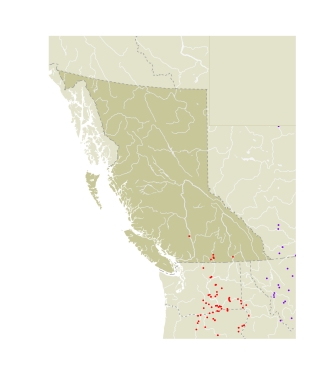Viceroys were bivoltine in BC. The few specimens available suggest that the adults of the first brood flew in May and early June, and those of the second brood from the last week of July through August. Eggs are laid singly or in groups of two or three near the tip of the leaf, usually on the underside but sometimes on the upperside of the leaf (Bethune 1874). The second or third instar larvae of the second brood hibernate in a hibernaculum formed of silk and rolled leaf (Saunders 1869c; Bethune 1874). Viceroys apparently switched from their native larval foodplants to cultivated apple, and were extirpated from BC and northern Washington when pesticide spraying to control coddling moth and other apple orchard pests started (Guppy et al. 1994). The last Viceroy in BC was recorded at Lillooet in 1930.
Viceroys were originally thought to be Batesian mimics of Monarchs, with the supposedly palatable Viceroys being protected from predation by their resemblance to the unpalatable Monarch. Recently, however, they have been shown to be Mullerian mimics of Monarchs, that is, Viceroys are as unpalatable as the Monarchs they resemble (Ritland and Brower 1991; Ritland 1995). Birds that attack either a Viceroy or a Monarch will learn to associate its colour pattern with unpalatability, and will then tend to avoid attacking both butterfly species in the future. Once a bird has had a bad experience when attempting to eat one individual of either species, both species are protected from bird predation by the close similarity of their wing patterns.
Willow, native crab apple, and cultivated apple were probably used as larval foodplants in BC. Larvae feed on willow in Yakima County, WA, and in Ontario and Connecticut (Saunders 1869c; Munroe 1948; Newcomer 1964a). Viceroys in eastern North America also use poplar, and are common on cultivated apple, plum, and cherry in orchards (Ferris and Brown 1981). Re-establishment of Viceroys in BC is possible, but will not be successful with continued insecticide spraying of apple orchards.
|
|
